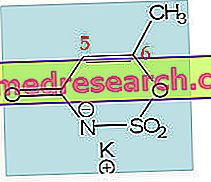Generality
The micropenis is a penis of dimensions decidedly inferior to the normality standards.
A deficiency of testosterone in the first years of life up to adolescence is generally what determines its appearance. However, there are also idiopathic cases - that is, devoid of explainable causes - and others due to environmental factors.

Thanks to certain diagnostic tests, doctors can trace the causes of the micropenis and plan ways and times of therapy.
Usually, hormonal treatments have a fundamental importance in young age, as in many cases they can increase the size of the penis.
For adults, there is the possibility of surgical intervention, with an operation called phalloplasty of lengthening.
Short anatomical reference to the penis
The penis resides between pubis and perineum, has a cylindrical shape and is composed mainly of three elements: the bodies, the head and the foreskin.
The bodies are three: two cavernous and one cancellous.
The cavernous bodies are parallel to each other and placed in the dorsal fascia (upper side) of the penis; inside them pass the so-called cavernous arteries. The spongy body, on the other hand, is placed in the dorsal fascia (lower side) of the penis and the urethra flows through it, that is the canal that carries urine or sperm outside.
Around the bodies, there is connective tissue and, at their point of origin, resides the scrotum, the sac within which the testicles are located.

Figure : main anatomical elements of the penis. From the sito concerned.it
The head of the penis corresponds to the glans, which has an opening at the tip, called the urinary meatus. The urethra ends in the urinary meatus. The glans has a particular area all around, known as the crown.
Finally, the foreskin is a layer of skin, which serves to cover the glans.
What is the micropenis?
The micropenis is a penis of dimensions clearly inferior to the normality standards.
In general, in individuals with a micropenis, all other structures attached to the penis (scrotum, urethra, perineum, etc.) are normal, ie they do not exhibit any abnormality.
DIMENSIONS OF THE MICROPENE
In order to speak of micropenis, the male sexual organ must have very specific dimensions:
- In an adult man, the erect penis must be shorter than 7 centimeters (2.8 inches).
- In an infant, the erect penis must be shorter than 1.5 centimeters (0.75 inches).
Without a comparison with the dimensions in normal conditions, the aforementioned measures may be of little use. Therefore, readers are reminded that:
- During an erection, the average penis length of a healthy adult man is about 12.5 centimeters (5 inches) or so.
- During an erection, the average length of the penis of a healthy male infant is between 2.7 and 4 centimeters (ie between 1.1 and 1.6 inches).
The length of the micropenis according to specialists
In technical language, the micropenis is that condition whereby the penis is at least 2.5 standard deviations smaller than a normal penis.
To understand how much the 2.5 standard deviations correspond to, in terms of length, it is sufficient to refer to the measures mentioned above (less than 7 centimeters, in the adult, and less than 1.5 centimeters in the newborn).
Epidemiology
According to some statistical research, the condition of micropenis would concern a new born every 200.
Causes
In most cases, the presence of the micropenis is due to insufficient production of testosterone, the main male sex hormone (or androgen).
More rarely, it is the result of unknown causes ( idiopathic micropenis ) or environmental interference .
Some information on testosterone
Testosterone is a steroid hormone, whose production in humans is primarily the so-called Leydig cells of the testes and is influenced by the luteinizing hormone (LH).
Still in man, testosterone covers very important functions. It is in fact the main responsible for the maturation and development of the external genitals, for the appearance of secondary sexual characteristics (beard, mustache, hair, lowering of the tone of the voice, etc.), of the puberty growth, of spermatogenesis, of the development of libido, etc.
Contrary to what many people believe, small amounts of testosterone are also present in women. In female individuals, production is the responsibility of the ovaries, but it is always governed by the luteinizing hormone.
In both men and women, the adrenal cortex also participates in the production of testosterone.
IDIOPATHIC MICROPENE
In medicine, the term idiopathic, associated with a pathological condition, indicates that the latter has arisen without obvious and demonstrable reasons.
MICROPENE DUE TO A LACK OF TESTOSTERONE
Doctors and scientists have observed that the micropenis due to a lack of testosterone in the blood is generally connected to some specific pathological conditions.
These pathological conditions include:
- Testicular dysgenesis . It is the medical term that indicates the presence of one or more testicular anomalies. A possible testicular dysgenesis is cryptorchidism, that is the failure to descend into the scrotum of one or both testicles.
- Congenital defects in the synthesis of testosterone or dihydrotestosterone . A recent Japanese study, published in the scientific journal Journal of Clinical Endocrinology & Metabolism (Journal of Metabolism and Clinical Endocrinology), showed that a substantial number of men with micropenis have mutations in the SRD5A2 gene.
The SRD5A2 gene synthesizes a particular enzyme, known as 5 alpha reductase, which under normal circumstances acts on testosterone and converts it to dihydrotestosterone. Dihydrotestosterone is the body's most powerful androgenic hormone, with an activity that is 4-5 times higher than that of testosterone.
- Androgen insensitivity syndrome, also known as Morris syndrome . It is a very rare condition, which arises due to a genetic mutation against the sex chromosome X. Men who are carriers of it have a normal set of sex chromosomes (ie XY), but do not develop the typical sexual characteristics of the male. This derives from the fact that their cells do not respond to androgen stimulation, as instead occurs in a healthy man (hence the term of androgen insensitivity).
From the anatomical point of view, men with Morris syndrome have different typical somatic traits of women.
- Congenital male hypogonadism . Male hypogonadism consists of decreased testicular function, which leads to inadequate production of androgens and / or deficiency in sperm production.
Some causes of congenital male hypogonadism are: Klinefelter syndrome, Prader-Willi syndrome and Noonan syndrome.
- Gonadotropin deficiency due to inadequate stimulation of the anterior pituitary . Gonadotropins are hormones able to regulate the activity of the gonads, ie the reproductive organs that produce gametes (in humans, they are the testicles; in women, they are the ovaries).
The most important are the aforementioned luteinizing hormone (LH) and the stimulating follicle hormone (FSH). Their secretion belongs to the anterior pituitary (or adenohypophysis).
- Congenital hypopituitarism (or congenital pituitary insufficiency) . It consists of the reduced production of one or more of the eight pituitary hormones. It is a different situation from the previous one: in the case in question, there is no altered stimulation, but a real defect at the level of the pituitary (hypophyseal hypoplasia, consequent to one or more genetic mutations).
Readers are reminded that another pituitary hormone that stimulates penis growth is the growth hormone, also known as GH or somatotropin. Therefore, its decline determines not only a reduced skeletal growth, but also the lack of development of the main male genital organ.
MICROPENE AND ENVIRONMENT
Several genetic researches have shown that some non-pathological changes in the AHRR gene are at the origin of a predisposition to the micropenis in response to exposure to dioxin . In other words, those who carry a particular form of the AHRR gene are more susceptible to developing the micropenis if they are in some way exposed to dioxin in the fetal age.
According to other studies, completely different, the exposure of pregnant women to certain chemicals, such as certain pesticides, would cause genital malformations in the fetus. One of these malformations, in male subjects, is precisely the micropenis.
At the moment, the experiments conducted in this field are still few, so the results obtained so far are not enough to draw a definitive conclusion on the matter.
Please note: * AHRR is the English abbreviation for Aryl Hydrocarbon Receptor Repressor ; in Italian, it is equivalent to Repressor for the Aryl-Hydrocarbon Receptor. From AHRR originates a protein that goes to block the Aryl-Hydrocarbon Receptor (AHR).
** dioxin is a highly toxic and carcinogenic heterocyclic organic substance. Ubiquitaria in the environment, is included in the list of so-called endocrine disruptors (or endocrine disrupters, from the English disruptors ), ie it is a substance capable of binding to certain specific molecules of the endocrine system (receptors) and interfering with their normal functioning.
A CAUSE OF THE PAST
At one time, exactly between about 1940 and 1970, doctors in the United States prescribed an estrogen-like drug called diethylstilbestrol, with the ultimate goal of preventing abortion.
To ban its administration, it was the discovery that this medicine, in female progeny, caused benign tumors and adenocarcinomas in the vagina and cervix, while in the male it caused testicular alterations, epididymal cysts, reduced seminal production and micropenis .
Symptoms and Complications
The reduced size of the penis - which is the characteristic sign of the condition of micropenis - can have repercussions, sometimes even serious, at various levels.
First of all, it can make urination difficult.
Secondly, it can also be very problematic during sexual intercourse.
Finally, it can strongly influence the psychological sphere, inducing a sense of distrust in itself and even a state of depression in the micropenis carrier.
Fertility? ALTERED
Quite frequently, the presence of the micropenis coincides with a condition of infertility, due to poor sperm production. Infertility very often derives from anatomical and / or functional anomalies affecting the reproductive system (alterations of the testicles, inappropriate hormonal communication, etc.).
Diagnosis
The doctors establish the diagnosis of micropenis with a simple physical examination, during which they measure the length of the penis.

OTHER TESTS
In general, after ascertaining the presence of the micropenis, the doctors prescribe some specific diagnostic tests, to establish whether the carrier of the anomaly suffers from some hormonal disorder or one of the associated pathologies (testicular dysgenesis, congenital hypopituitarism, defects in the synthesis of dihydrotestosterone, congenital hypogonadism etc).
The identification of these problems is fundamental for planning the most effective treatment (or at least a remedy that can limit the consequences of the present pathological condition).
UNFOUNDED CONCERNS
In boys between 8 and 14 years, puberty has yet to take place or has just begun. Therefore the penis has not yet assumed its definitive dimensions.
All this, if associated with
- Excessive presence of suprapubic fat, which hides the male genital organ, e
- Strong physical constitution at a young age,
it can arouse, in parents and patients themselves, some unfounded and completely useless concerns, as the situation is destined, sooner or later, to change.
Treatment
Doctors can try to correct the condition of micropenis by resorting to both hormonal therapy (therefore pharmacological) and surgical therapy .
HORMONAL TREATMENT
The hormonal treatment consists mainly of the administration of exogenous testosterone .
To get good results, this treatment should start during early childhood - so early diagnosis is essential - and break up in childhood - to avoid unpleasant side effects such as early virilization and bone maturation.
On times and methods of administering exogenous testosterone, it is good to know that:
- The hormone intake is never continuous. In fact, every 3 months a temporary interruption of the therapy is foreseen.
- The possible routes of employment are the intramuscular and topical ones.

As for its effectiveness, hormonal treatment can be particularly successful in some patients and less in others, so it varies from person to person. In any case, it rarely causes the penis to reach a length considered normal.
If there is a 5-alpha reductase deficiency
In the presence of a 5-alpha reductase deficiency (so when there is a genetic mutation against the SRD5A2 gene), doctors can prescribe exogenous dihydrotestosterone therapy. The results obtainable from such treatment are more than satisfactory.
In this regard, it is important to point out that the use of dihydrotestosterone occurs in all those cases in which there is a reduced response to treatment with exogenous testosterone.
SURGICAL TREATMENT
The surgical treatment of the micropenis consists of a particular and very delicate operation, called elongation phalloplasty .
During a stretch phalloplasty, the surgeon takes a portion of skin tissue from a patient's forearm, which he applies around the small penis, creating a sort of cylindrical shell.
Then, on this cylindrical shell, it operates as follows:
- He has it reached by a network of blood vessels and innervates it. The construction of a vascular system serves for the capacity of erection, while the innervation for sensitivity during sexual intercourse.
- He inserts an inflatable prosthesis (NB: in general, they are prostheses filled with liquid), equipped with an internal channel for the expulsion of urine and sperm. In other words, there is a synthetic urethra in the prosthesis.
If the patient's consent is given, the surgeon can also improve the aesthetic appearance of the cylindrical shell by reconstructing the gland ( glanduloplasty ) at its peak.
Elongation phalloplasty is a somewhat invasive operation, therefore it is not free from risks and complications.
PAST SURGICAL TREATMENTS
In the past, above all on the influence of the psychologist and sexologist John William Money (1921-2006), the theory was spread that the carriers of the micropenis were "failed women" and that, for this reason, it was necessary to resort to a particular therapy, known as sex reassignment .
Briefly, the reassignment of sex consisted of: a surgery for the modification of the genital apparatus (in a male, the penis was replaced with a vagina), hormonal treatments and psychological therapy aimed at accepting the new sexual condition.
Starting in 1975, after the emblematic case of a certain Bruce Reimer, the studies and theories on sex reassignment, carried out by Money, aroused disdain and were the object of harsh criticism in many parts of the world. Thus it was that several doctors and representatives of the print media took charge of discrediting Money, stating that the reassignment of sex was a completely illogical treatment.
At this point, we consider it appropriate to point out that the subjects with micropenis are born with an XY chromosomal kit, like men with a normal sized penis.
Prognosis
Prognosis can vary greatly from case to case. This variability depends, to a large extent, on the causes that determined the presence of the micropenis.



